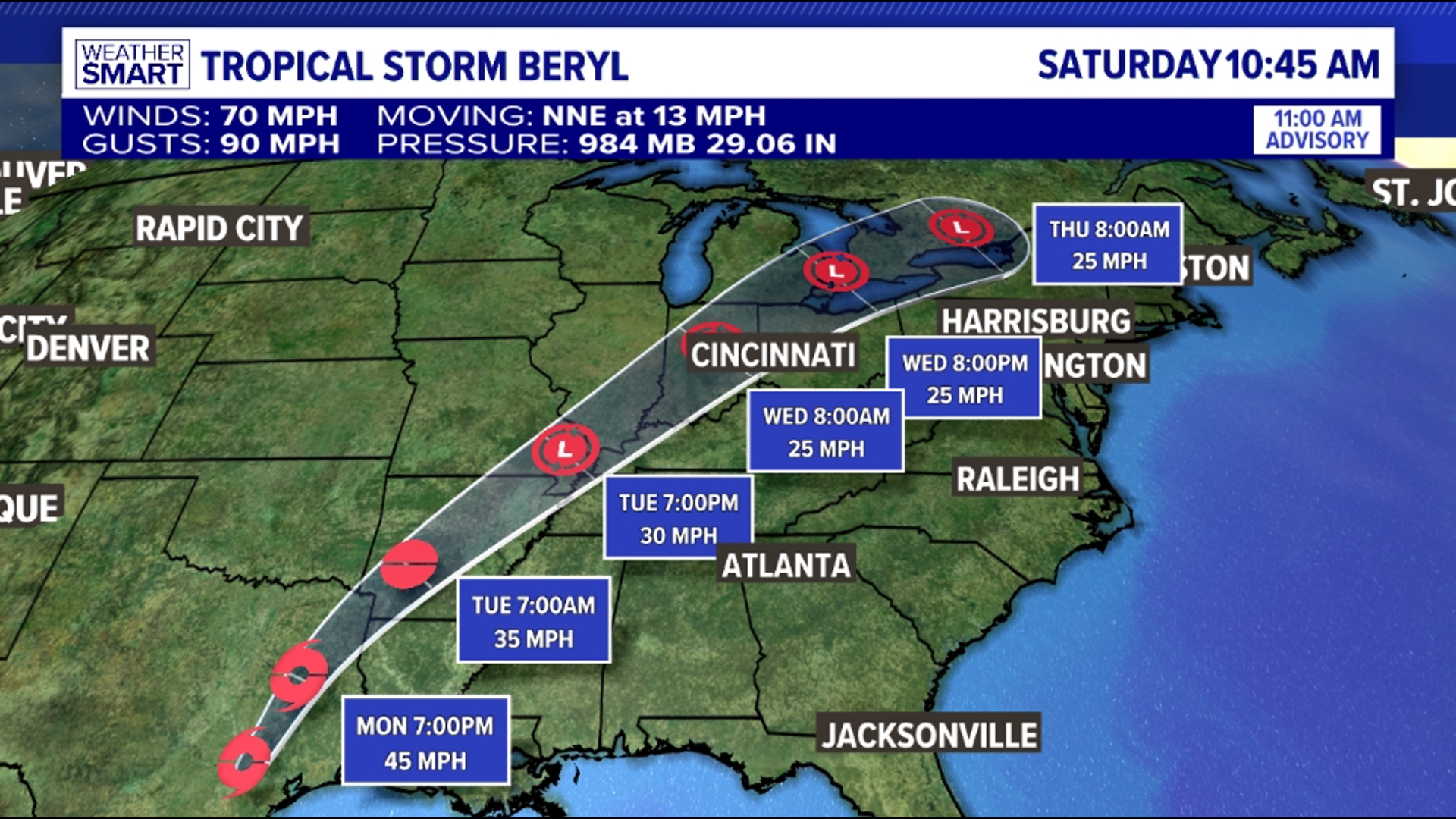Hurricane Beryl’s Projected Path

Hurricane beryl path tracker – Hurricane Beryl, the first named storm of the 2023 Atlantic hurricane season, is forecast to take a path through the Caribbean Sea and potentially impact the southeastern United States. Its projected track is influenced by a complex interplay of atmospheric conditions and ocean currents.
Originating as a tropical depression over the eastern Atlantic, Beryl is expected to strengthen into a hurricane as it moves westward. The storm’s trajectory is guided by the prevailing easterly trade winds, which will carry it towards the Lesser Antilles. From there, Beryl is likely to turn northwestward, potentially making landfall in Puerto Rico or the Dominican Republic.
Potential Landfall Locations
The exact location of Beryl’s landfall remains uncertain, but the storm’s path places several islands and coastal areas at risk. Puerto Rico, Hispaniola, and the Bahamas are among the potential impact zones. The timing of the storm’s arrival is also subject to change, but current forecasts indicate that Beryl could reach the Caribbean by the end of the week.
Factors Influencing the Path
Numerous factors influence the path of a hurricane, including atmospheric pressure gradients, wind shear, and ocean temperatures. The strength and direction of the trade winds will play a significant role in determining Beryl’s trajectory. Additionally, the presence of high-pressure systems to the north and south of the storm will influence its movement.
Ocean temperatures also affect hurricane development. Warmer waters provide more energy for the storm to intensify. The Caribbean Sea is typically warm enough to support hurricane formation, but cooler waters to the north could weaken Beryl as it approaches the United States.
Historical Hurricane Data and Analysis: Hurricane Beryl Path Tracker

To gain a comprehensive understanding of the potential risks and vulnerabilities posed by Hurricane Beryl, it is crucial to examine historical hurricane data for the region it is expected to impact. By analyzing the frequency, intensity, and landfall patterns of previous hurricanes in the area, we can draw valuable insights into the likelihood and severity of Beryl’s impact.
Historical Hurricane Data
The following table summarizes historical hurricane data for the region where Hurricane Beryl is expected to impact:
| Year | Hurricane Name | Category at Landfall | Landfall Location | Damages (USD) |
|---|---|---|---|---|
| 1992 | Hurricane Andrew | 5 | South Florida | $26.5 billion |
| 2004 | Hurricane Charley | 4 | South Florida | $4.8 billion |
| 2005 | Hurricane Wilma | 3 | South Florida | $10 billion |
| 2017 | Hurricane Irma | 4 | South Florida | $50 billion |
| 2020 | Hurricane Eta | 4 | Nicaragua | $1.5 billion |
As evident from the table, the region has experienced several major hurricanes in the past, including Category 4 and 5 storms. These hurricanes have caused significant damage and loss of life, highlighting the vulnerability of the region to tropical cyclones.
Comparison to Hurricane Beryl, Hurricane beryl path tracker
Comparing Hurricane Beryl’s projected path and characteristics to historical data provides insights into potential risks and vulnerabilities. While it is difficult to make precise predictions, historical data suggests that the region is at risk of experiencing a major hurricane impact, similar to those seen in the past.
Keep a close watch on Hurricane Beryl’s path as it approaches, and stay updated on local weather conditions for Clarksville here. By tracking the hurricane’s progress, you can make informed decisions to ensure your safety and well-being.
As Hurricane Beryl swirls across the Atlantic, its path can be tracked with precision. Live weather radar provides real-time updates on the storm’s progress, allowing us to stay informed and make necessary preparations. By combining the accuracy of the hurricane beryl path tracker with the immediacy of live weather radar, we can stay ahead of the storm and minimize its potential impact.